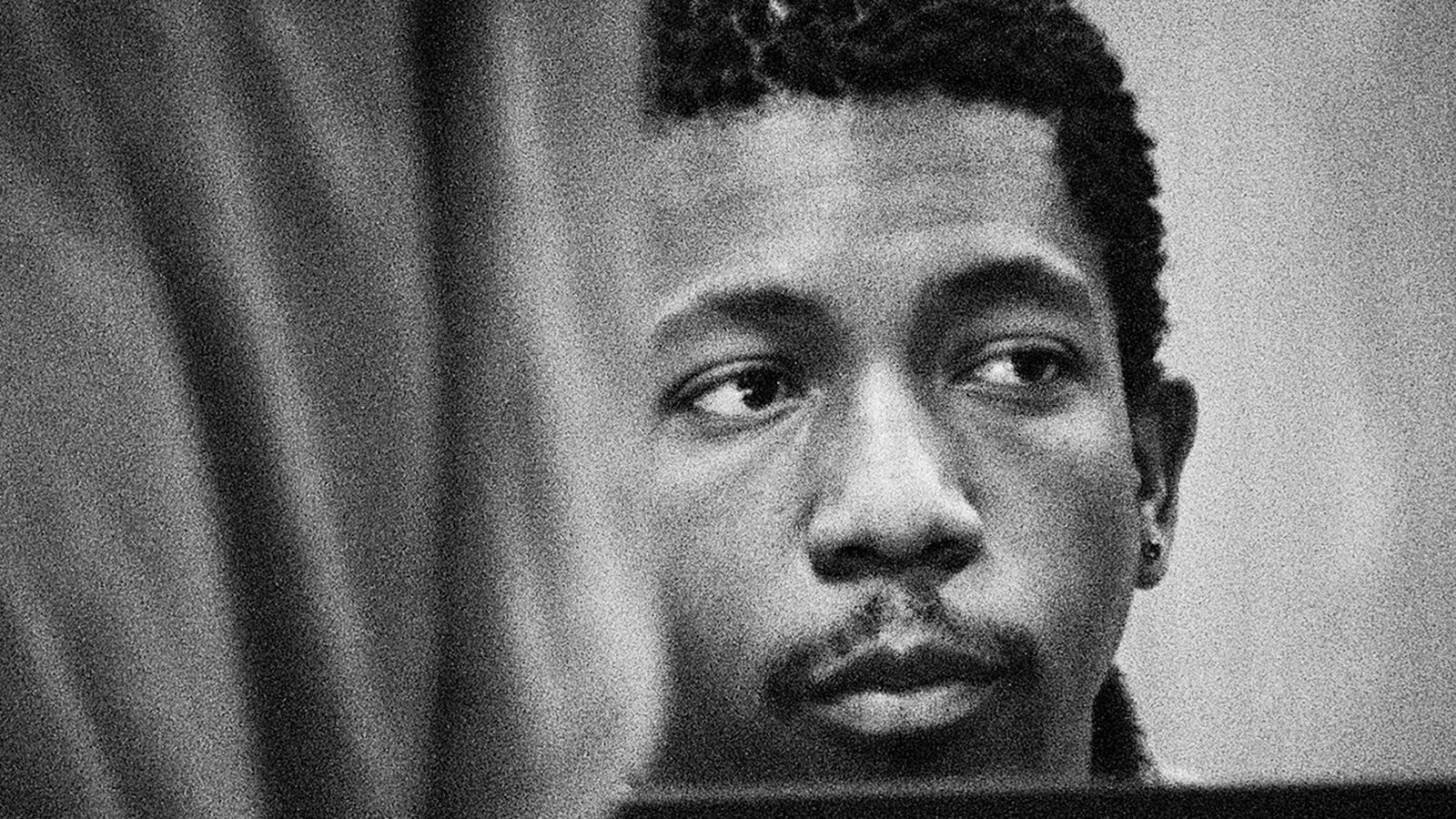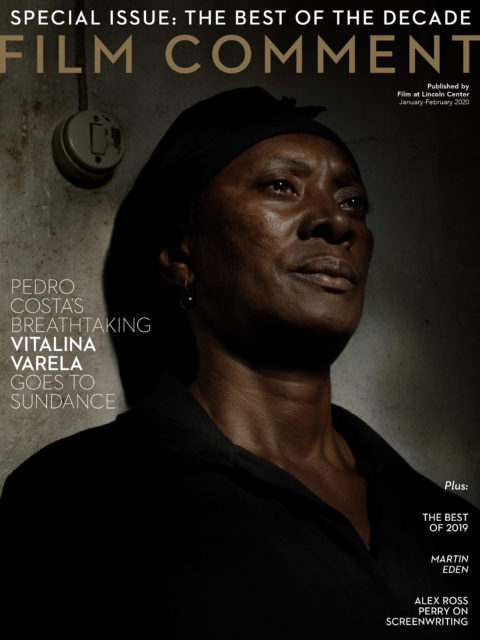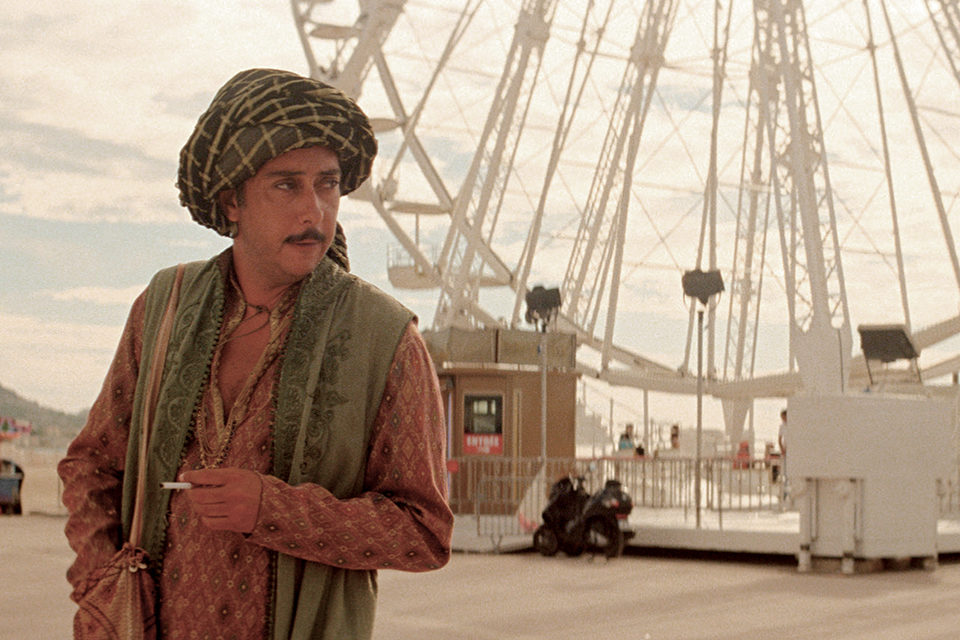
The Termite’s Return
Have we yet begun to trace the shape of 21st-century cinema? The previous decade’s retrospective stock-taking resulted in the consecration of David Lynch’s Mulholland Drive and Wong Kar Wai’s In the Mood for Love. Consummate movie-movies lushly shot on celluloid, both were already nearly a decade old at the time, and even then seemed like the last gasp of a previous century. The films were themselves acts of mourning, for lost loves, lost time, and the loss of a certain kind of cinema. One story we could tell ourselves about the 2010s is that nothing has emerged to fill the void. Or rather, too many things have. The defining qualities of the moment are fragmentation and heterogeneity, a messy, amorphous, contradictory too-muchness that has made our waking life an overstimulating hellscape and yet proved remarkably conducive to artistic experimentation.

I attempted (and quickly abandoned) the impossible exercise of compiling a list of the films and filmmakers of the decade, but two names came immediately to mind: Hong Sangsoo and Kevin Jerome Everson. Workhorses and visionaries both, Hong and Everson are masters of casual formalism, committed in different ways to a cinema of the everyday. They achieve abundance—Hong made 14 features in the 2010s; Everson made about 100 films in all, mostly shorts—through a reduction of means, and the frugality of their practice implicitly foregrounds the economic imbalances that plague the field. One might say they are true termite artists in an age of rampaging white elephants.
The terms come from Manny Farber’s classic manifesto “White Elephant Art vs. Termite Art,” and they strike me as an especially useful paradigm for the current moment. (An excellent recent MOCA show curated by Helen Molesworth presented Farber’s own paintings alongside a wide range of work that could be said to evince termite-like characteristics.) Farber’s essay, which dates from more than half a century ago, is more suggestive than definitive, and I have always found some of his specific examples less convincing than his vivid central dichotomy. Today, however, it seems easier than ever to identify both the white elephants for which art is (as he put it) “an expensive hunk of well-regulated area”—the prestige movie by the brand-name auteur, the festival film with its pre-digested meanings—and the countervailing termite tendencies of work that “goes always forward eating its own boundaries” and “feels its way through walls of particularization.”
While feature-length films still govern the conversation, some of the decade’s most invigorating activity took place within the ever-elastic short form, where a host of young filmmakers—Gabriel Abrantes, Mati Diop, Zachary Epcar, Laida Lertxundi, Camilo Restrepo, and James N. Kienitz Wilkins, to name just a few—found tremendous opportunities for freedom, reveling in the subversive and generative potential of ellipses and compression whether working with narrative or abstraction. An even more relevant question than Bazin’s “What is cinema?” might now be “Where is cinema?” And in response, leading filmmakers like Apichatpong Weerasethakul, Albert Serra, and Tsai Ming-liang have extended their distinctive sensibilities into the gallery, the theater, and the VR realm.
Some of the most ambitious features of the decade enact a termitic burrowing into and around subjects at once urgent and elusive: the specter of historical trauma in Anocha Suwichakornpong’s By the Time It Gets Dark, and an ongoing social and political emergency in Miguel Gomes’s Arabian Nights. The latter also belongs to a very 2010s category of work that assumes monumental proportions while remaining termite-like in its stubborn idiosyncrasy and irreducibility. Other anti-elephantine epics: David Lynch’s Twin Peaks: The Return, the ultimate singularity; Hu Bo’s An Elephant Sitting Still, one of the cinema’s great debuts and tragically also one of its great final acts, a film that patiently delineates an entire worldview; and Mariano Llinás’s grand, mad adventure in scale and duration, the playful and obdurate 14-hour-plus La Flor, which has variously screened in three parts, four parts, and eight parts, a one-of-a-kind shape-shifter that is both modular and unassimilable.

Arabian Nights (Miguel Gomes, 2015)
Presenting his work at a film at Lincoln Center retrospective in 2018, Christian Petzold railed against a type of festival film he described as “the lemon-tree movie.” This would, as Petzold derisively imagines it, involve two lovers, one Palestinian and one Israeli, their star-crossed romance represented by a lemon tree situated right on the Gaza-Israel border. (He may have had in mind an actual Israeli movie called Lemon Tree, which has a somewhat different plot but uses similar botanical symbolism.) Anyone who has sampled even a sliver of contemporary world cinema will recognize this species of “subject movie,” to use Petzold’s term. These are films that are relentlessly about something: laden with sociopolitical import, allowing for a touch of lyricism but very little ambiguity, and bearing the telltale traces of the screenwriting workshop.
Petzold’s example gets at a rarely spoken truth about the film-industrial complex. While distinctive work is emerging all the time, especially on the margins, and therefore easy to overlook, many of the institutions that determine what gets made and shown still function as forces of homogenization, from film schools to the funding bodies and development labs that are sometimes attached to the very festivals that serve as showcases for the end results of this often highly professionalized process. Ours is an age of fatiguing overload but also of numbing sameness: too many movies, too many festivals, too many reviews, too many opinions, too many lists, too many hot takes and think pieces that turn complicated issues into cultural talking points and empty posturing—all of which amount not to a lively discourse but a reinforcement of conventional wisdom (or worse).
The abundance of the age is deceptive, and it masks both structural limitations and systems of control. Festival lineups often reflect the distorting effects of premiere policies and the compromises inherent in relationship management. The purview of film journalism is increasingly determined by industry priorities, from release schedules to what gets released at all, and tailored around the actual or perceived incuriosity of editors and readers. The brave new world of digital streaming promises instant access, but choice is a pernicious myth when entire swathes of cinema are conveniently forgotten or actively suppressed (as is happening with Disney’s continued withholding of 20th Century Fox titles from repertory theaters). Everything is market-tested, only for us to be told that what people want is more of the same. The late-capitalist logic is seamless: what we get is not, as advertised, plenitude, but its precise opposite, a narrowing of options to an algorithmically determined menu and a simultaneous impression that no other options exist.

By the Time It Gets Dark (Anocha Suwichakornpong, 2016)
In a decade drowning in images, can we even say which ones are emblematic? Which films attempted, or sought to comprehend, new ways of seeing (and hearing)? In this regard, one of the decade’s most enduring achievements has to be Véréna Paravel and Lucien Castaing-Taylor’s Leviathan, a radical experiment in subjectivity and embodiment that in a single stroke reunites the once strongly conjoined documentary and avant-garde traditions. The unthinkable volume of images in circulation today has prompted Lucrecia Martel to declare that, were she just starting out, she would not make new images but edit existing ones. The decade saw extraordinary compilation films by Sergei Loznitsa and Andrei Ujica, and one brilliant twist on the form in Shengze Zhu’s Present.Perfect., which uses not found but live-streamed footage, and locates within our present surfeit of images new registers of performance and perhaps new forms of empathy.
Nearly two decades after 9/11, are we any closer to understanding what it means for catastrophe and conflict to be immediately absorbed into the realm of images? Our daily lives are now punctuated by videos of extreme violence, captured on surveillance cameras or streamed from war zones, and further complicating the ethical stakes, but this now-familiar imagery also has the potential to be read or reimagined as cinematic language, as in Loznitsa’s Maidan and Ossama Mohammed and Wiam Simav Bedirxan’s Silvered Water, Syria Self-Portrait. For a guide to contemporary (and indeed the last century’s) visual culture, you could do worse than 89-year-old Jean-Luc Godard, whose astonishing decade began with Film socialisme and ended with The Image Book, a film-essay on the violence of representation dense with repurposed and manipulated images.
No film of the 2010s came closer to the texture of contemporary lived experience than Eduardo Williams’s The Human Surge, which captures a mode of apprehending, moving through, and relating to the world—ambivalently connected, hyperalert yet distractible—that is absolutely of the moment. (This most termite-like of films also happens to include one bravura transition sequence involving a pissed-on anthill.) In the fictional realm, Bertrand Bonello’s Nocturama describes a world of absolute capitalism, impotent fury, and nihilist ultraviolence in which belief systems have become brands—a world that is unmistakably ours.
What lingers most from my moviegoing decade is not a type of image or a mode of visuality but an experience of time—or rather, many different experiences of time. Cinema has always been capable of conjuring multiple temporalities, so it is perhaps to be expected that this formal dimension would become more pronounced as our relationship with time is reshaped. Digital has expanded the possibilities of duration, as in the work of James Benning and Albert Serra, and over the 18 hours of Twin Peaks: The Return, in which time itself seems to dilate. To a startling degree, many of my favorite recent films engage in plays of temporality both subtle and radical: the sly and deranging anachronisms of Zama, the short-circuiting of time in Kaili Blues, the conflicting temporal markers in Martin Eden, the sleight-of-hand time travel of Happy as Lazzaro, and the multiple coexisting time frames of Petzold’s Transit, a ghost story in which the past and the present haunt one another. The most exciting films of the decade made tangible the notion of cinema as a time machine.







